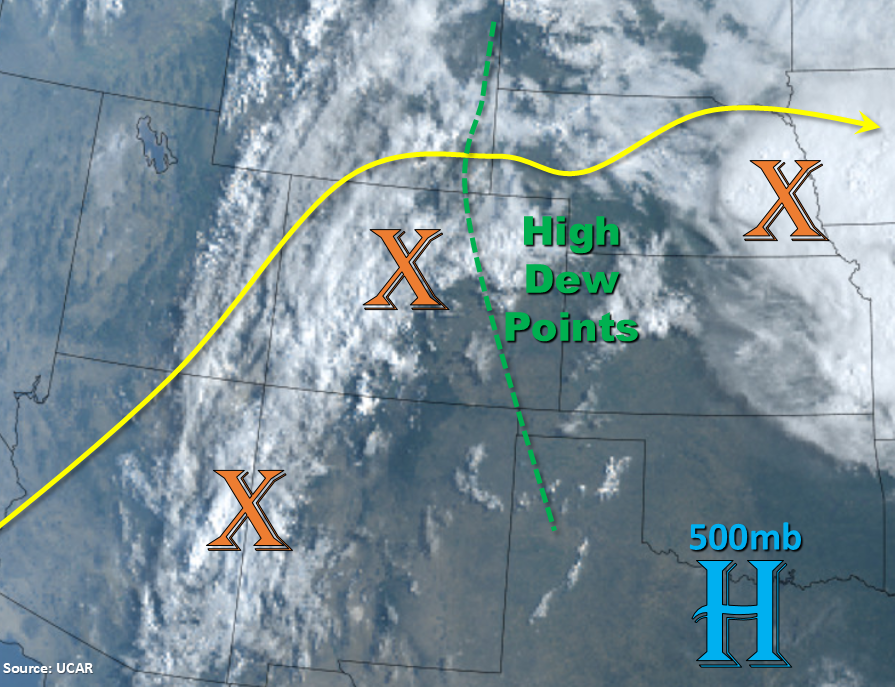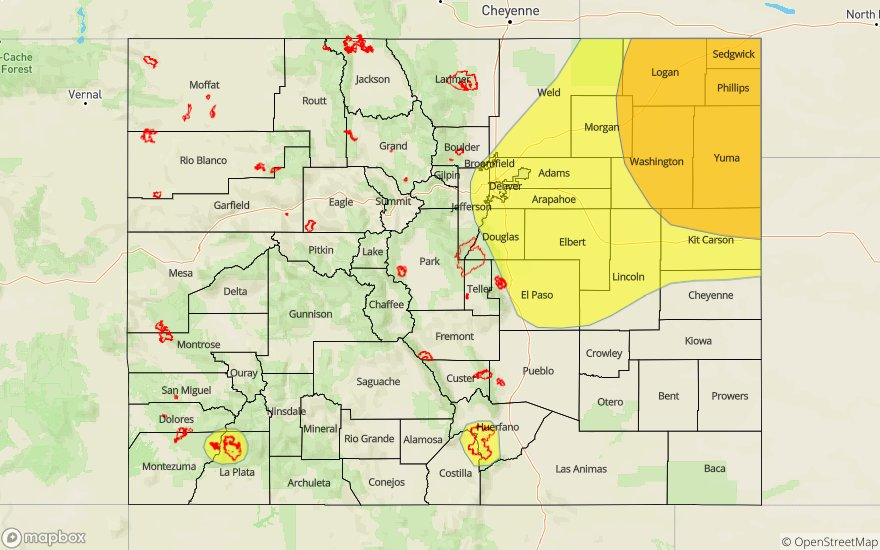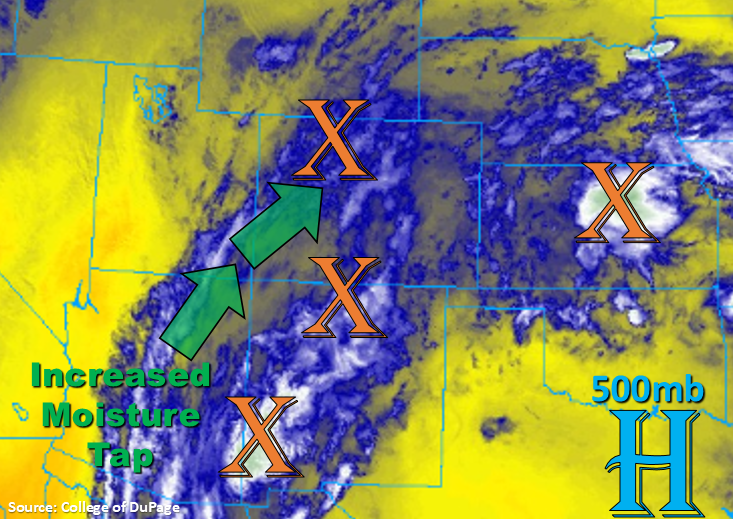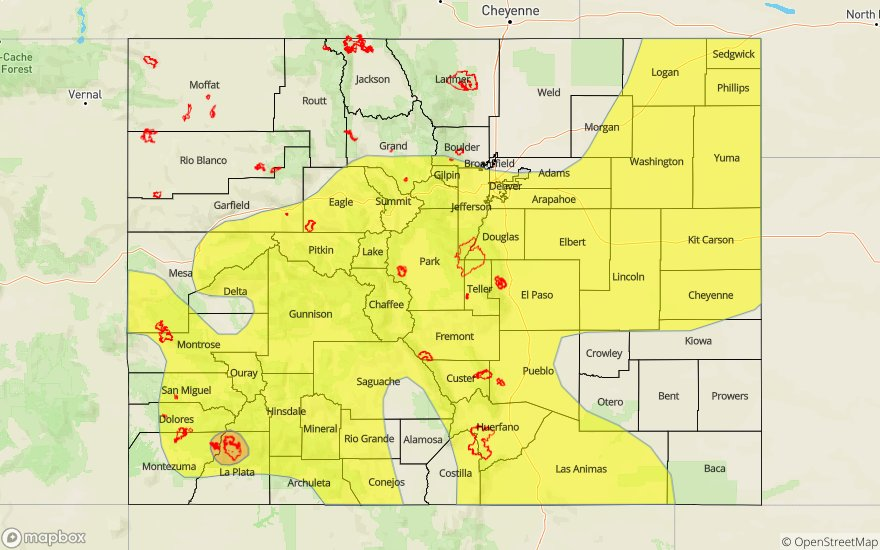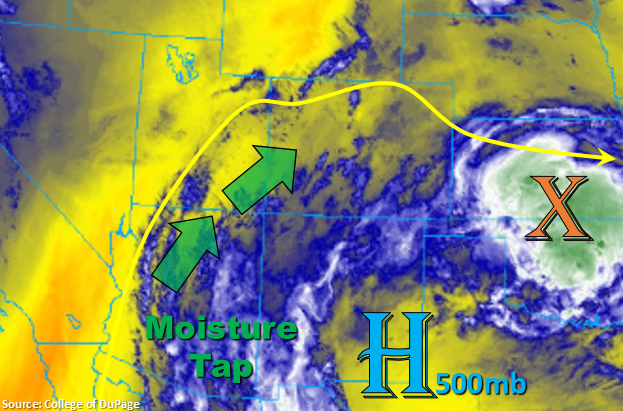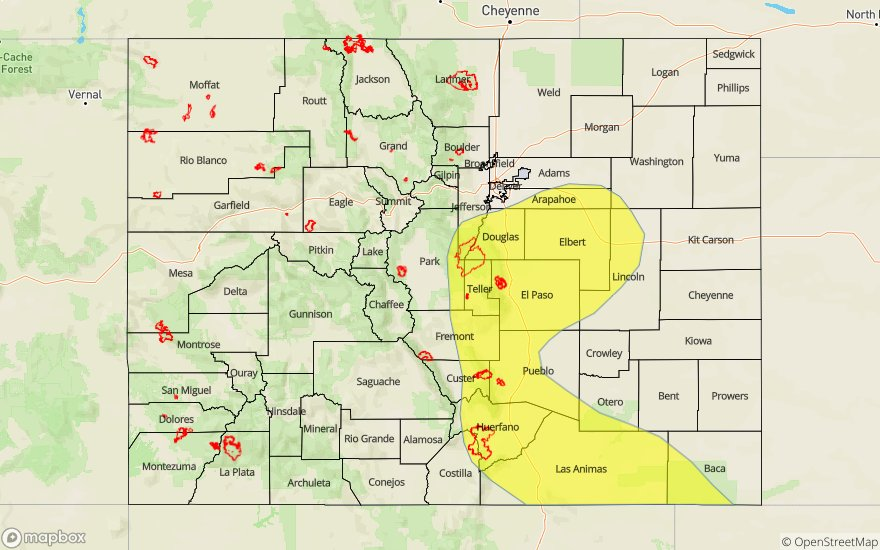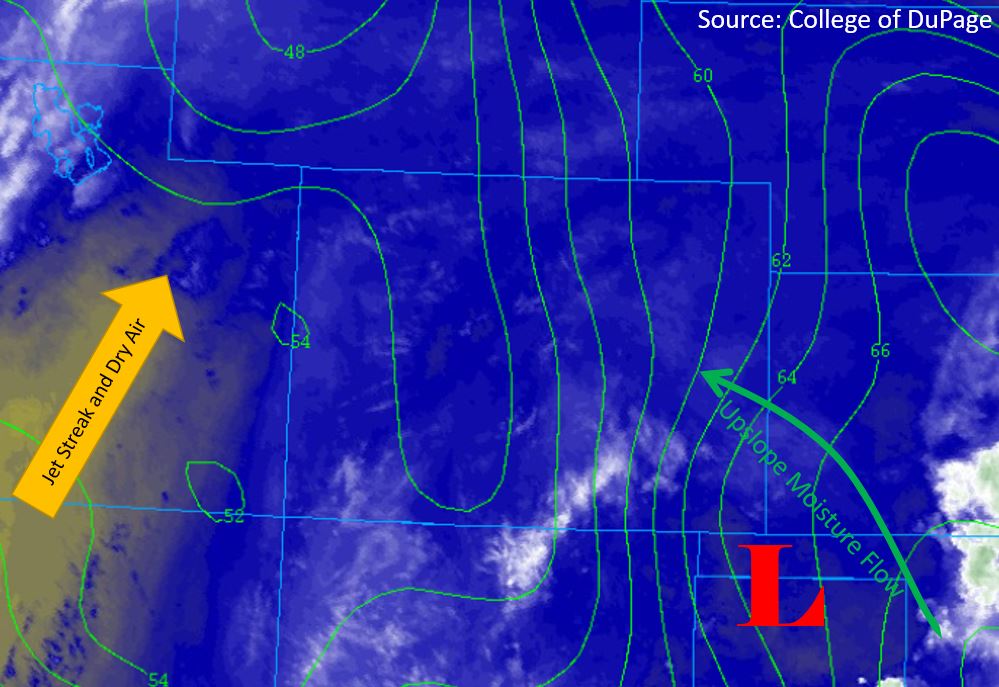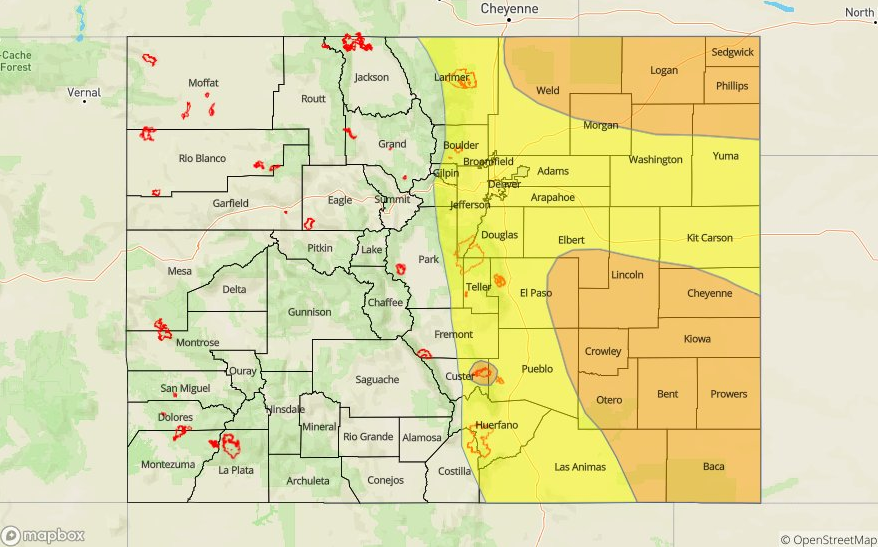Issue Date: Sunday, August 11th, 2019
Issue Time: 9:10AM MDT
— A MODERATE flood threat has been issued for the Northeast Plains
— A LOW flood threat has been issued for the southern Urban Corridor, Palmer Ridge, 416 burn area and the Spring Creek burn area
The active weather pattern will continue to round out the weekend with the 500mb high remaining in a favorable position for a northward moisture surge. Marked in the visible satellite imagery below (orange X’s) are the shortwaves, which are expected to help enhance today’s rainfall. The one currently over the state is helping create moderate rainfall over the SW high terrains. To our east is a larger shortwave that passed overhead yesterday, which helped cause some heavy rainfall overnight in Kansas. Today, the Pacific trough will begin to move to the east throughout the day (to our north). This will start to pull in the dry air seen in Utah (cloud free) over western Colorado by this evening with more westerly flow aloft forecast. Southwest flow is forecast east of the Continental Divide as the 500mb only moves slightly eastward from the approaching trough. High moisture is marked in the green line below and denotes where dew points are 60°F or greater. This high moisture is helping produce some thick fog over the northwest corner of the state as well. While some of this moisture will mix out west to east, high PW values will remain over the Northeast Plains. Paired with a decrease in steering winds over this area, storms will be capable of producing very heavy rainfall.
More widespread storms over the mountains with higher rain rates are forecast as morning heating occurs. There should be good coverage of storms, associated with the shortwave, by 11AM to noon. By about 2PM these storms will move into the Urban Corridor and eventually the Northeast Plains. Increased instability and shear over the Northeast Plains should create a couple severe thunderstorms (large hail, strong winds and possible isolated tornado) and an eventual N-S oriented line of storms. More scattered storms are anticipated over the southern high terrains this afternoon with a storm or two possible over the adjacent plains. The most likely region to receive rainfall over the adjacent plains from these storms is the climatological hot region, the Palmer Ridge.
All storms should exit into Kansas and Nebraska by 10PM or so, but a couple late night showers may be possible over the Southeast Mountains. These would be fueled by a moisture rich environment and the next shortwave moving around the ridge and into the southern tier of Colorado. A Moderate flood threat has been issued for the Northeast Plains and a Low threat has been issued for 416 and Spring Creek burn area, since storms in the area will be able to produce rain rates that have been known to cause flooding issues.
Today’s Flood Threat Map
For more information on today’s flood threat, see the map below. For Zone-Specific forecasts, scroll below the map.

Zone-Specific Forecasts:
Front Range, Southeast Mountains, Urban Corridor, Palmer Ridge, Raton Ridge, Northeast Plains, Southeast Plains:
Max 1-hour rain rates up to 0.5 inches (northern mountains) and 0.8 inches (southern mountains) will be possible. Over the adjacent plains, trailing storms may cause totals up to 1 inch by tomorrow morning. Max 1-hour rain rates up to 2.25 inches will be possible over the Northeast Plains (Moderate threat area) with isolated storm totals around 3 inches possible by tomorrow morning. Threats include local stream and creek flash flooding, field ponding and road flooding. A couple of severe thunderstorms will be possible with large hail, damaging winds and an isolated tornado. The flood threat should decrease after midnight or a little before. With trailing storms capable of producing such high rain rates over the Southeast Mountains, a Low threat has been issued for the Spring Creek burn area.
Primetime: 11AM to Midnight
Northwest Slope, Grand Valley, Southwest Slope, Northern Mountains, Central Mountains, San Juan Mountains, San Luis Valley:
High moisture holds on over the San Juan and south Central Mountains for one more day. Storms will widespread in coverage, since dry air won’t move into the state from the west until late tonight. Current showers and thunderstorms will likely limit instability for stronger storms this afternoon, but 1-hour rain rates up to 0.6 inches will be possible. With rain falling near the 416 burn area the last couple of days and rain rates greater than 0.4 inches possible, a Low flood threat has been issued for this scar. The threat for mud flows, debris slides and flash flooding over the burn area should end by 10PM. The San Luis Valley will also likely get some rain again with isolated totals up to 0.75 inches by morning with more widespread max 1-hour rain rates closer to 0.5 inches.
Primetime: 11AM to 10PM
